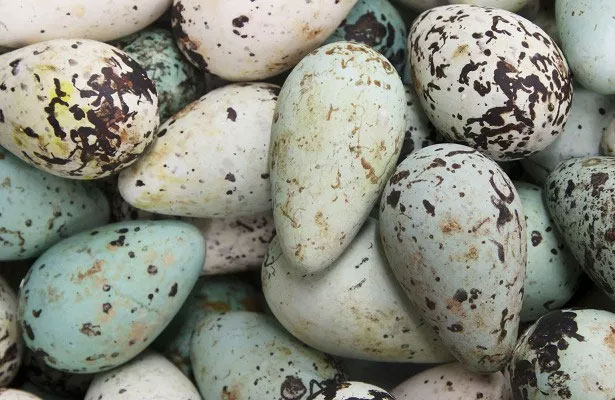Explain why some seabirds have pear shapes
According to Auk: Ornithological Advances magazine, British scientists explain why the eggs of some seabirds are pear-shaped.
The half-century study has shown that this form makes seabird eggs difficult to break and does not allow eggs to accidentally roll off the cliff into the sea.

Pear-shaped eggs of some species of seabirds appear during evolution that lasted for centuries - (Photo: Flickr).
The eggs of some Alcidae have irregular pear shapes, one is slightly pointed, and the other, on the contrary, is larger than other birds' eggs. Alcidae live on a rocky shore and lay eggs directly on the rocky outcrops.
Previously, ornithologists assumed that the egg form would not allow them to fall off the cliff and if the bird accidentally pushed the egg, when it fell, the egg would not roll in a straight line, but in a circle. But now scientists from Sheffield University (UK) think that this is not entirely true.
According to the results of the study, the problem is not the trajectory of motion, but in mechanical stability : the irregular shape of the egg does not even allow it to roll down. Because of the enlargement below the eggs, the eggs are completely difficult to roll off the hollows.
According to the authors, this form appeared during evolution for centuries, because pear-shaped eggs have no chance of falling into the sea and are more likely to survive until they hatch.
To test the hypothesis, the authors examined eggs with different shapes when stabilized on a slanted surface. The scientists compared the eggs of the sharp-billed uranium (uranium aalge) and the recessive albatross (Alca torda). At different angles of the surface from 20 ° to 40 °, pear-shaped eggs have been shown to be more stable. Moreover, the pear-shaped fruits are harder to push down.
- Count seabirds by recording sounds
- 'Population' seabirds reduced the alarm
- More than 8,000 unusually dead seabirds along Alaska's beaches
- Scientists decipher the sequence of pear genes
- Huge data warehouse contributes to explain the strange shapes of insect eggs
- Thousands of seabirds died from the tsunami in the United States
- The reason you should eat pears daily
- Seabirds eat more plastic than eat fish
- The terrifying truth behind the death of seabirds
- Breathtaking sight of sharks, dolphins and seabirds hunting sardines
- Decipher the mysterious shapes in the Amazon forest
- Seabirds will die slowly by swallowing plastic waste
 'Fine laughs' - Scary and painful torture in ancient times
'Fine laughs' - Scary and painful torture in ancient times The sequence of numbers 142857 of the Egyptian pyramids is known as the strangest number in the world - Why?
The sequence of numbers 142857 of the Egyptian pyramids is known as the strangest number in the world - Why? History of the iron
History of the iron What is alum?
What is alum?